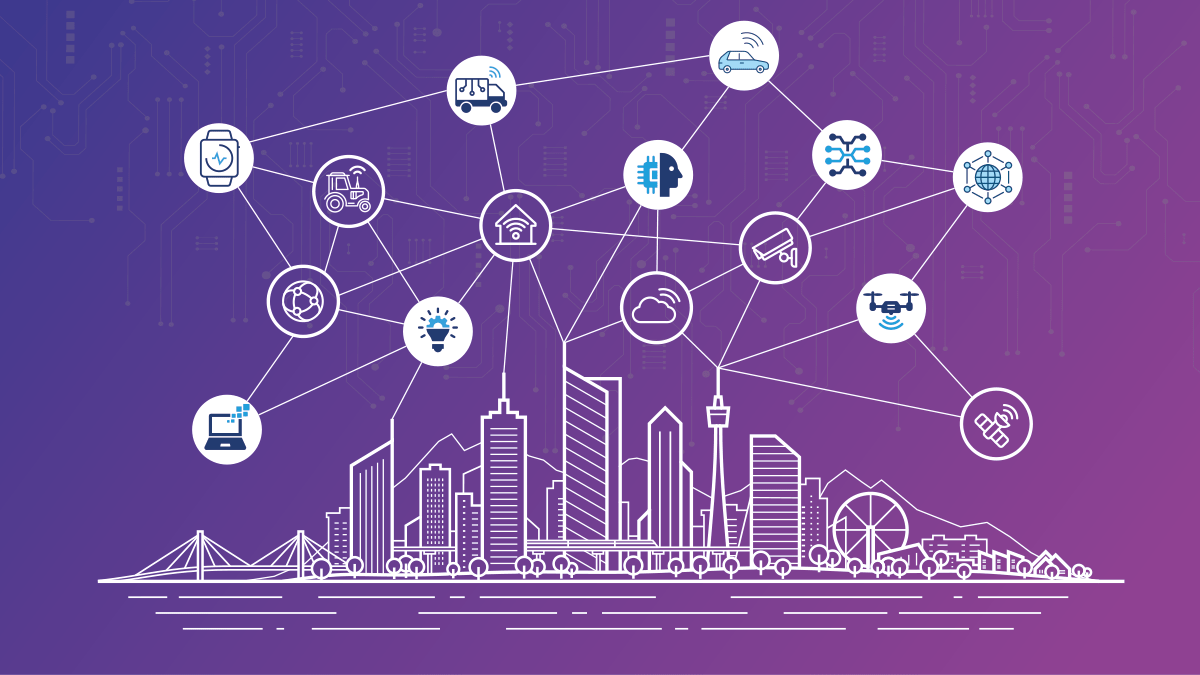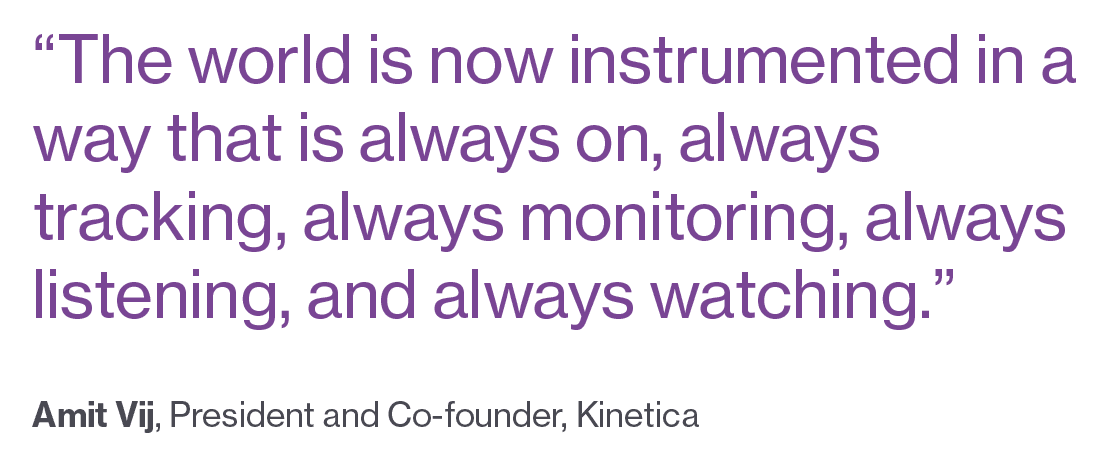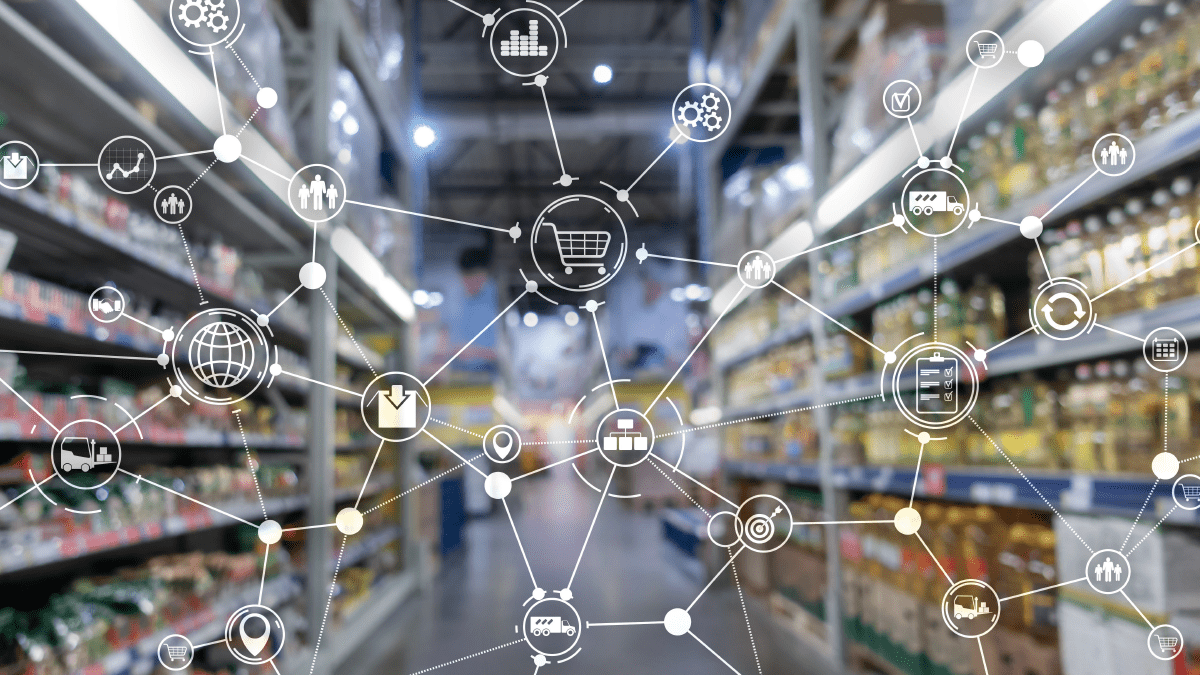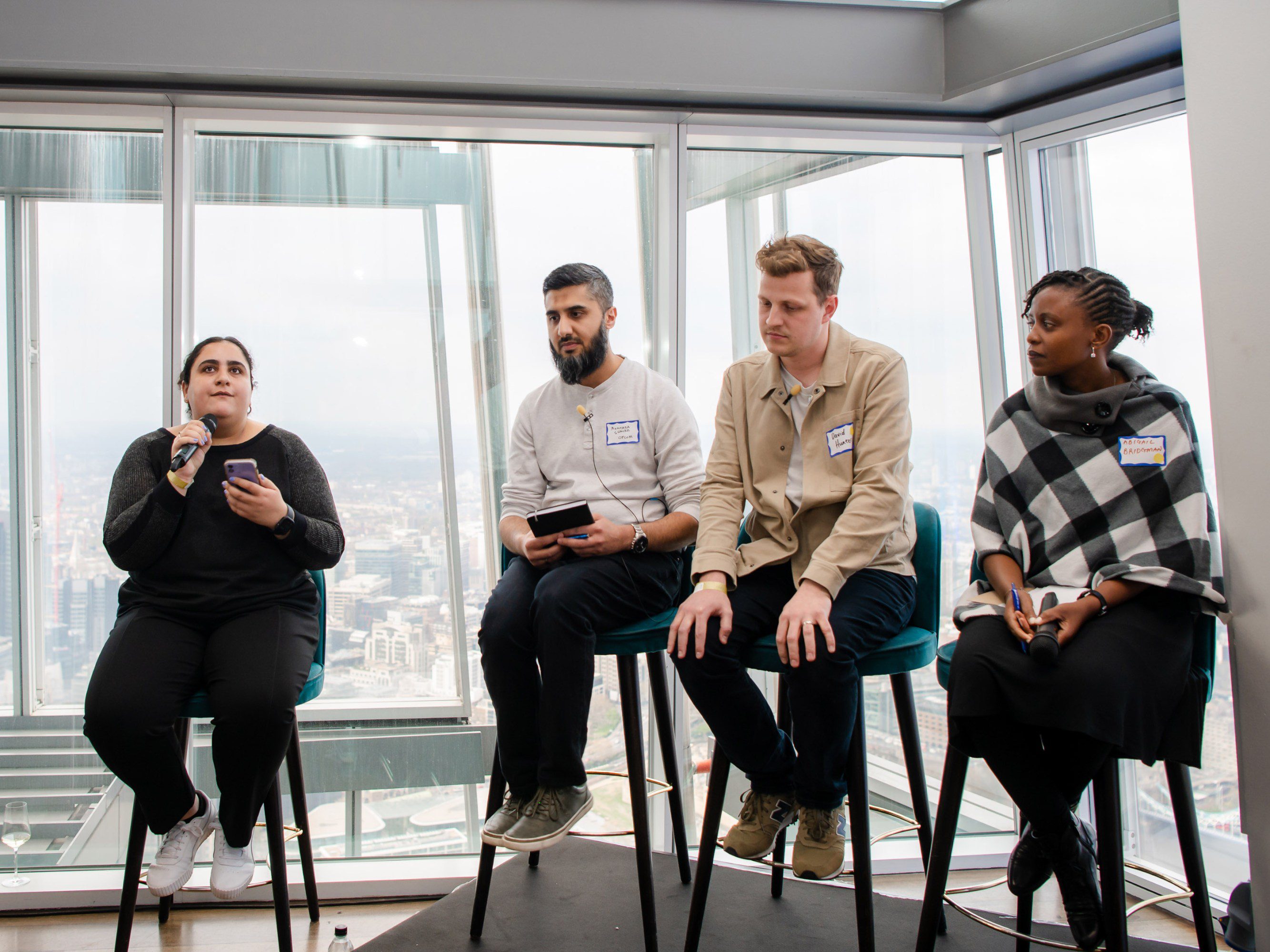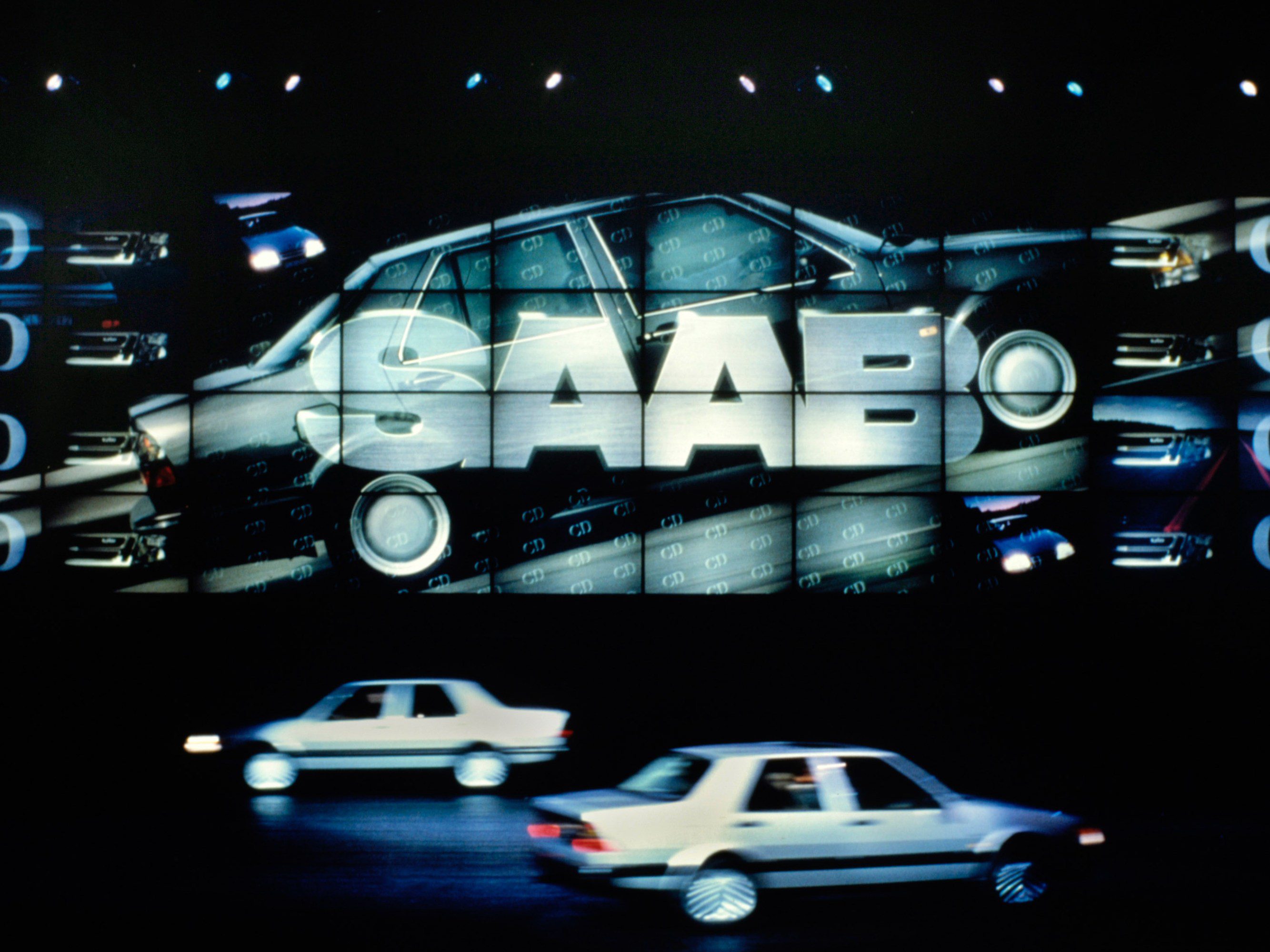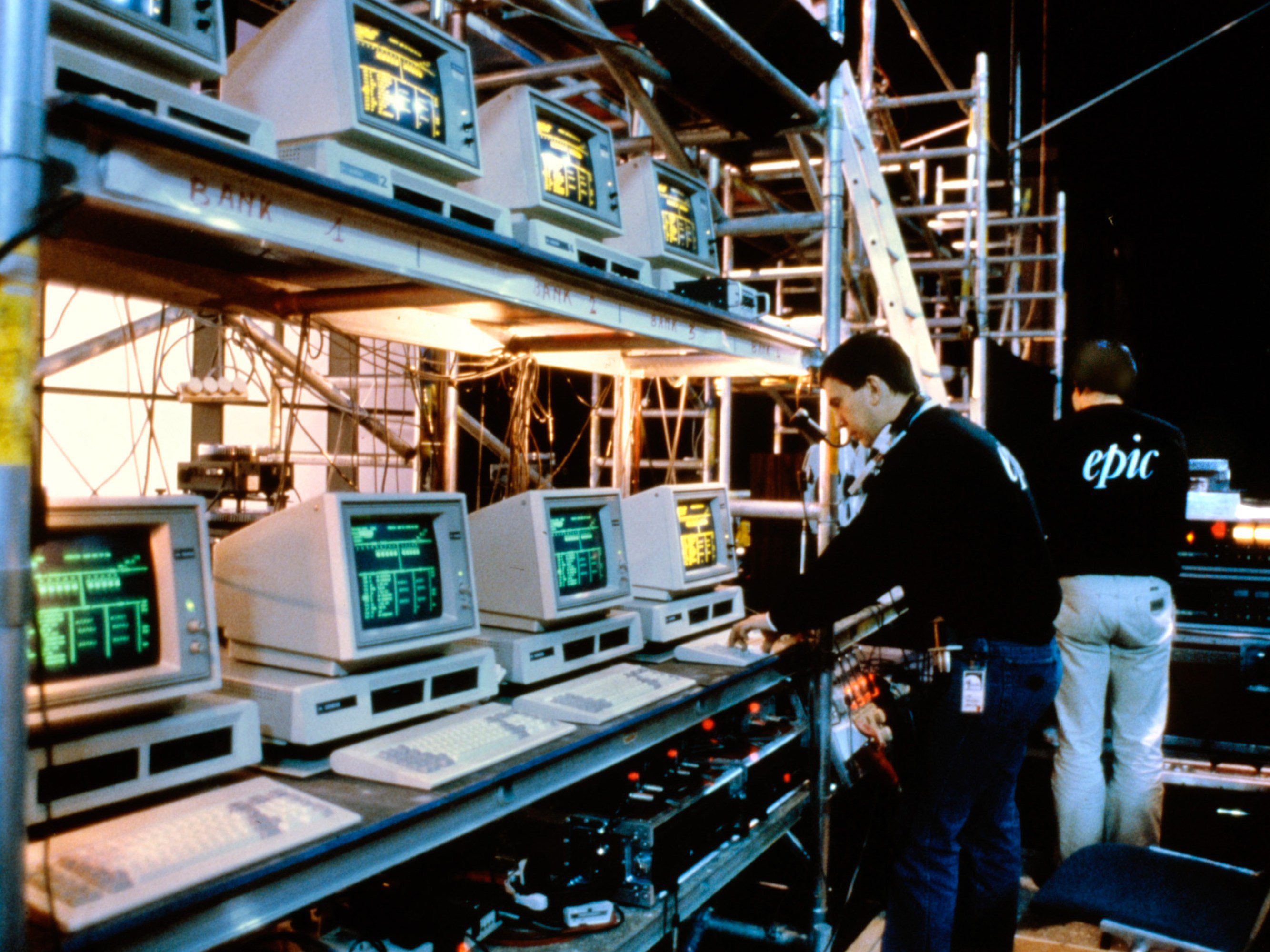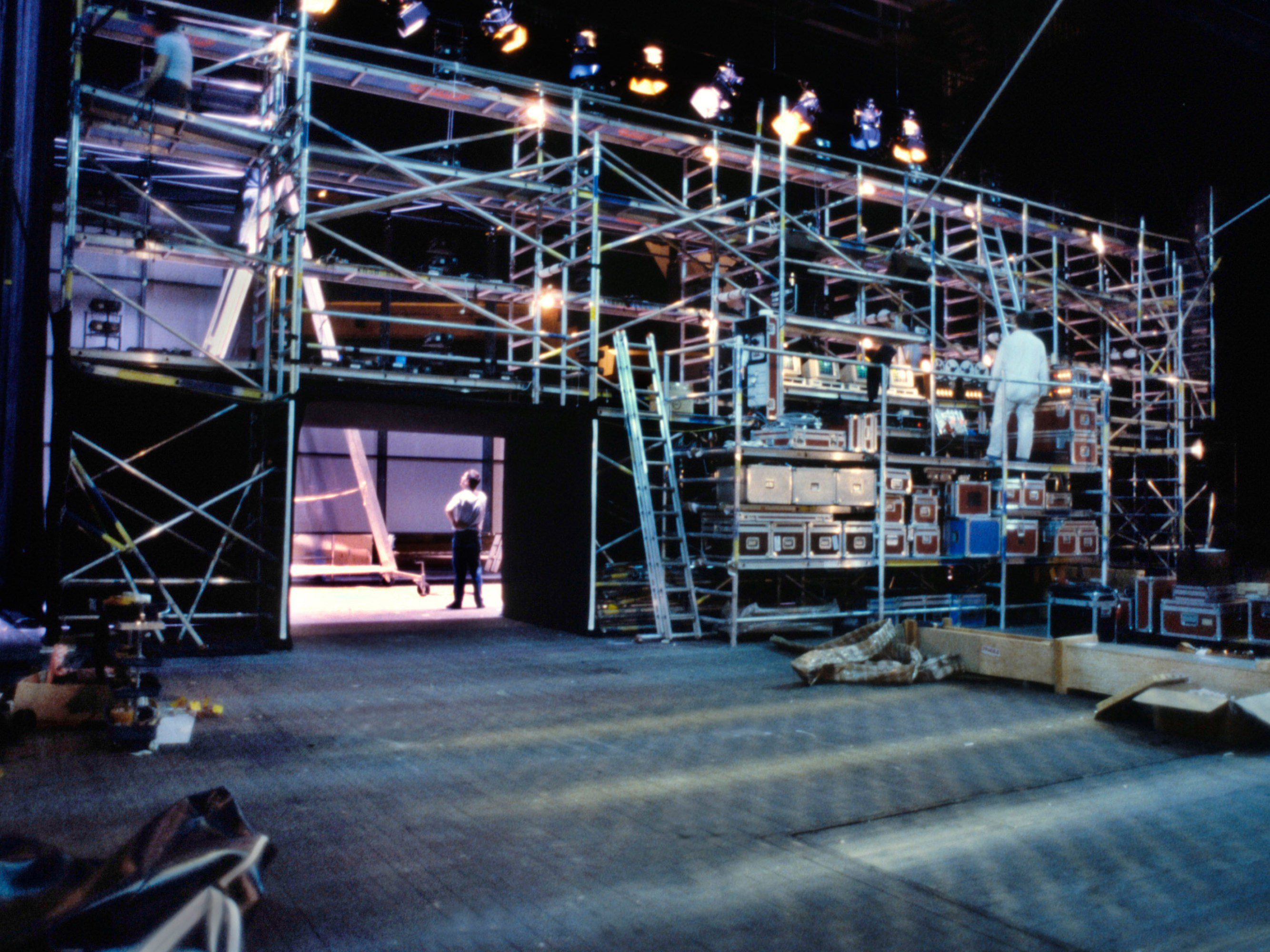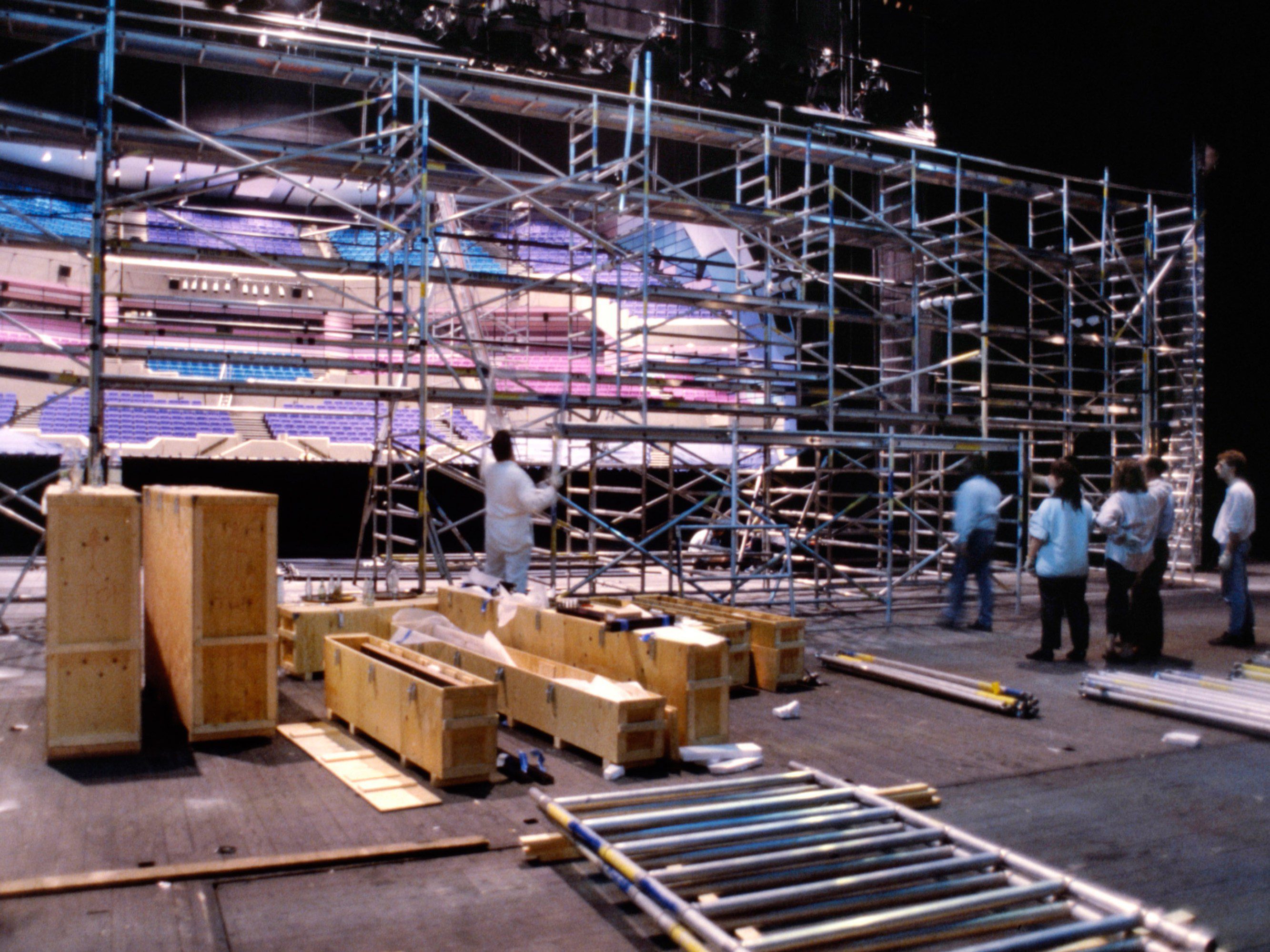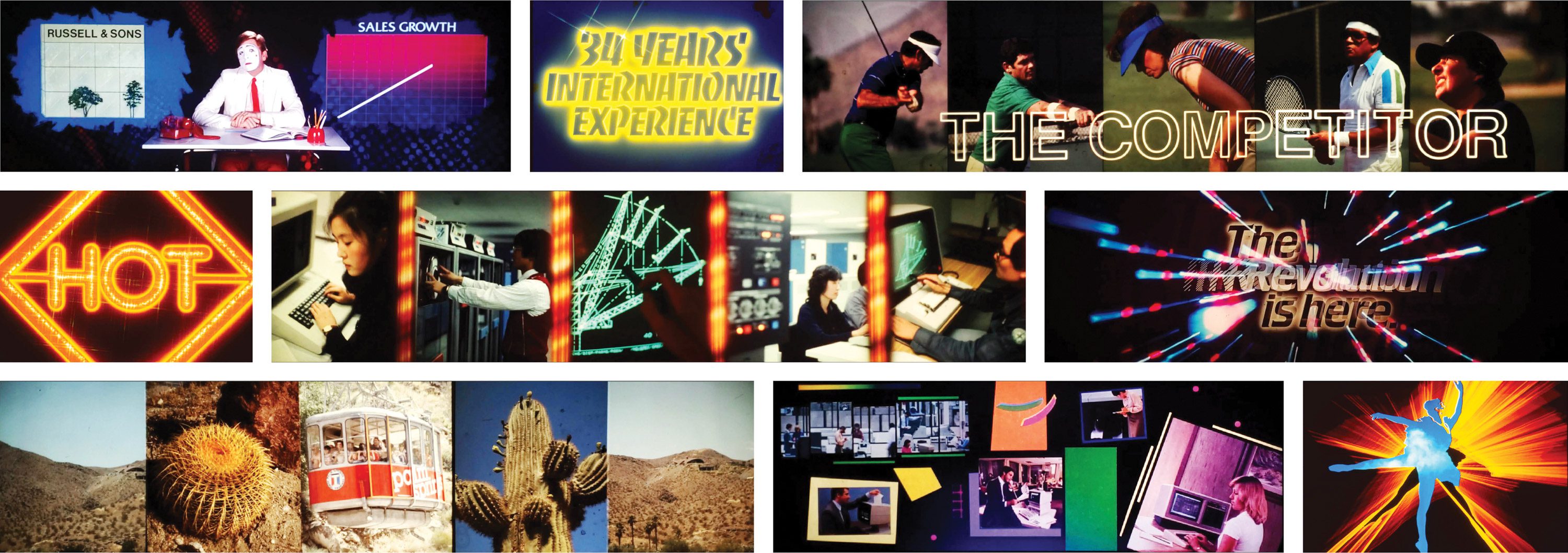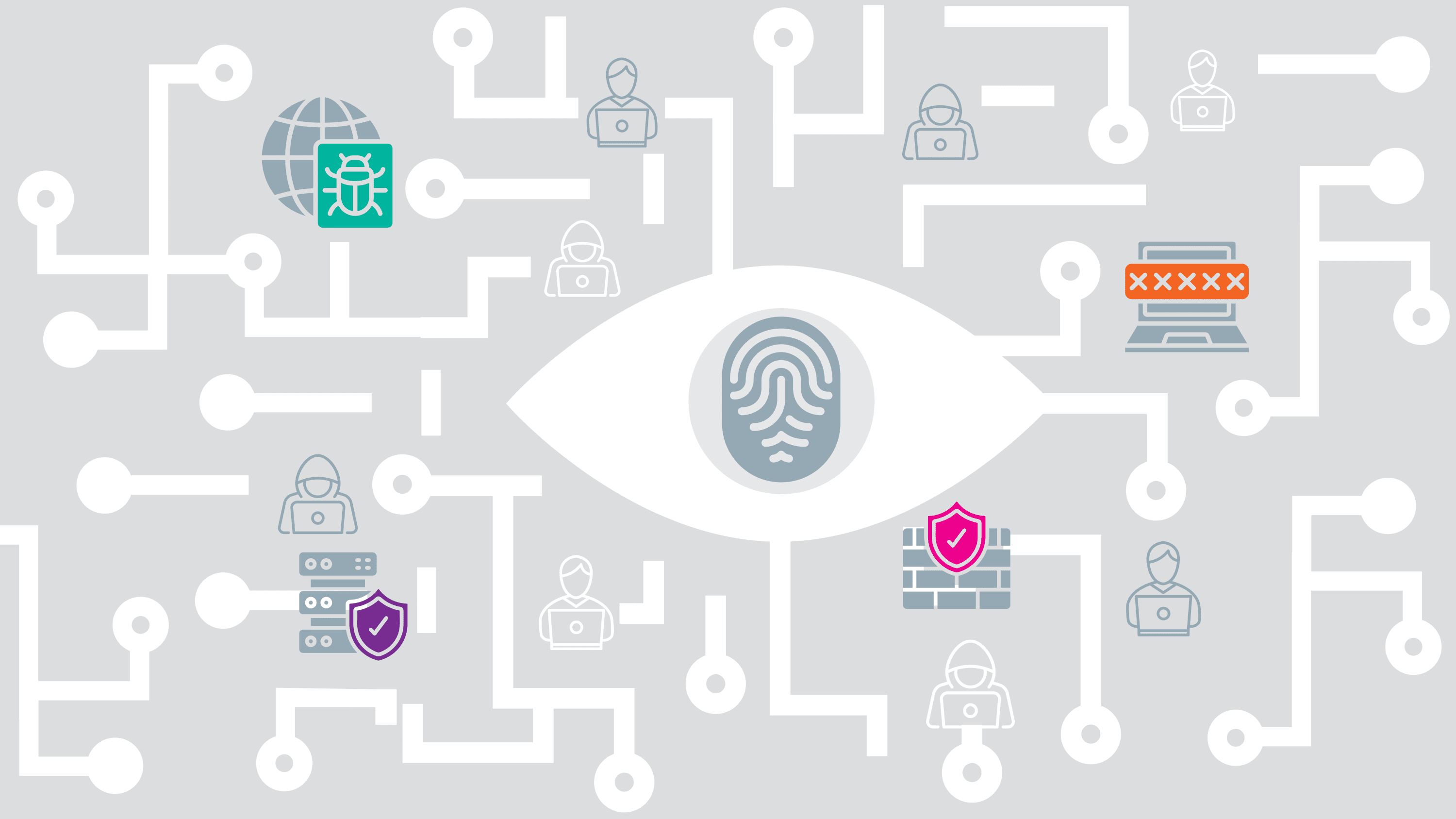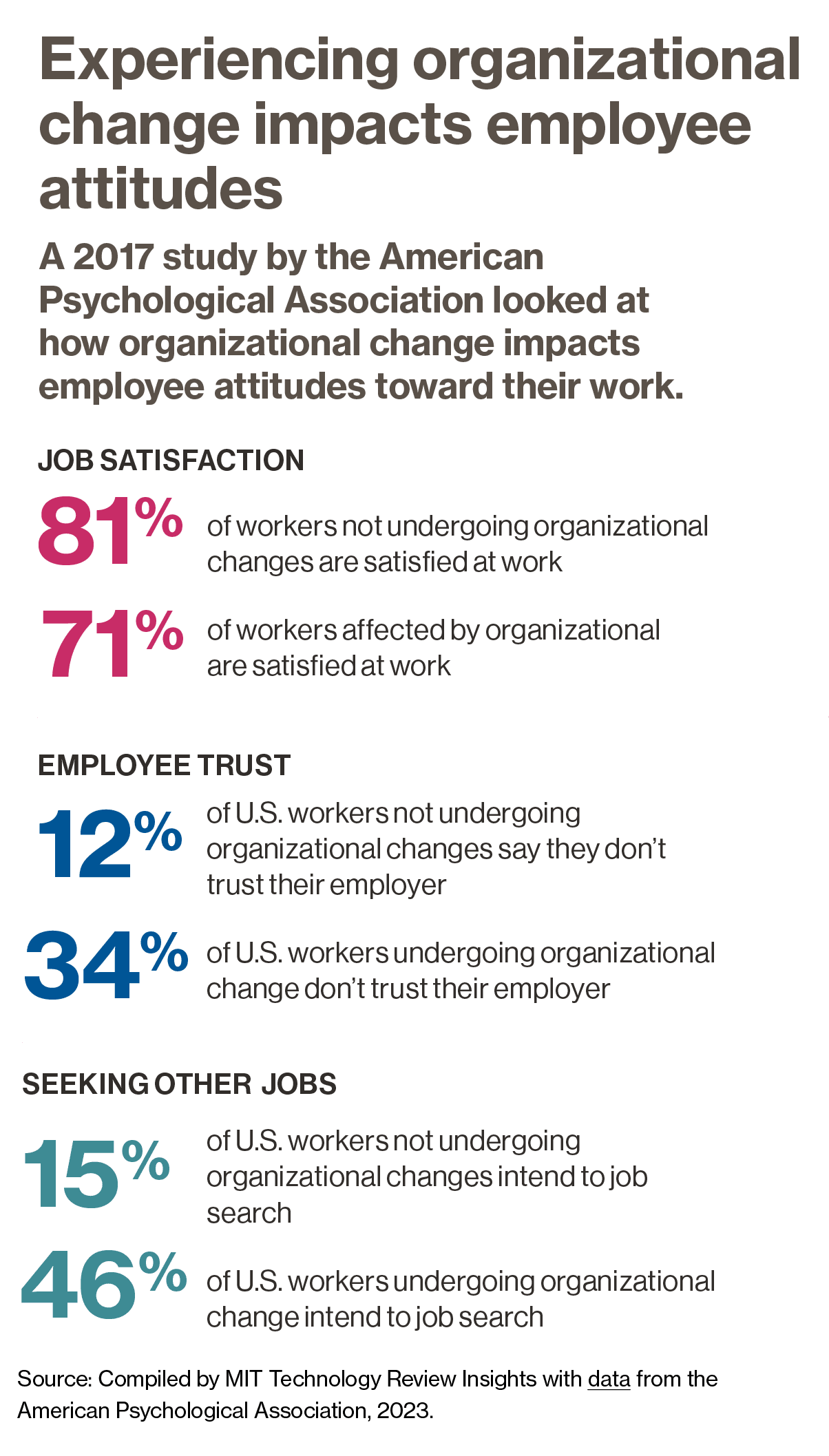Just before Christmas last year, a pastor preached a gospel of morals over money to several hundred members of his flock. Wearing a sport coat, angular glasses, and wired earbuds, he spoke animatedly into his laptop from his tiny glass office inside a co-working space, surrounded by six whiteboards filled with his feverish brainstorming.
Sharing a scriptural parable familiar to many in his online audience—a group assembled from across 48 countries, many in the Global South—he explained why his congregation was undergoing dramatic growth in an age when the life of the spirit often struggles to compete with cold, hard, capitalism.
“People have different sources of motivation [for getting involved in a community],” he sermonized. “It’s not only money. People actually have a deeper purpose in life.”
Many of the thousands of people who’d been joining his community were taking the time and energy to do so “because they care about the human condition, and they care about the future of our democracy,” he argued. “That is not academic,” he continued. “That is not theoretical. That is talking about future generations, that’s talking about your happiness, that’s talking about how you see the world. This is big … a paradigm shift.”
The leader in question was not an ordained minister, nor even a religious man. His increasingly popular community is not—technically—a church, synagogue, or temple. And the scripture he referenced wasn’t from the Bible. It was Microsoft Encarta vs. Wikipedia—the story of how a movement of self-motivated volunteers defeated an army of corporate-funded professionals in a crusade to provide information, back in the bygone days of 2009. “If you’re young,” said the preacher, named David Ryan Polgar, “you’ll need to google it.”
Polgar, 44, is the founder of All Tech Is Human, a nonprofit organization devoted to promoting ethics and responsibility in tech. Founded in 2018, ATIH is based in Manhattan but hosts a growing range of in-person programming—social mixers, mentoring opportunities, career fairs, and job-seeking resources—in several other cities across the US and beyond, reaching thousands. Such numbers would delight most churches.
Like other kinds of congregations, ATIH focuses on relationship-building: the staff invests much of its time, for example, in activities like curating its “Responsible Tech Organization” list, which names over 500 companies in which community members can get involved, and growing its responsible-tech talent pool, a list of nearly 1,400 individuals interested in careers in the field. Such programs, ATIH says, bring together many excellent but often disconnected initiatives, all in line with the ATIH mission “to tackle wicked tech & society issues and co-create a tech future aligned with the public interest.”
The organization itself doesn’t often get explicitly political with op-eds or policy advocacy. Rather, All Tech Is Human’s underlying strategy is to quickly expand the “responsible-tech ecosystem.” In other words, its leaders believe there are large numbers of individuals in and around the technology world, often from marginalized backgrounds, who wish tech focused less on profits and more on being a force for ethics and justice. These people will be a powerful force, Polgar believes, if—as the counterculture icon Timothy Leary famously exhorted—they can “find the others.” If that sounds like reluctance to take sides on hot-button issues in tech policy, or to push for change directly, Polgar calls it an “agnostic” business model. And such a model has real strengths, including the ability to bring tech culture’s opposing tribes together under one big tent.
But as we’ll see, attempts to stay above the fray can cause more problems than they solve.
Meanwhile, All Tech Is Human is growing so fast, with over 5,000 members on its Slack channel as of this writing, that if it were a church, it would soon deserve the prefix “mega.” The group has also consistently impressed me with its inclusiveness: the volunteer and professional leadership of women and people of color is a point of major emphasis, and speaker lineups are among the most heterogeneous I’ve seen in any tech-related endeavor. Crowds, too, are full of young professionals from diverse backgrounds who participate in programs out of passion and curiosity, not hope of financial gain. Well, at least attendees don’t go to ATIH for direct financial gain; as is true with many successful religious congregations, the organization serves as an intentional incubator for professional networking.
Still, having interviewed several dozen attendees, I’m convinced that many are hungry for communal support as they navigate a world in which tech has become a transcendent force, for better or worse.
Growth has brought things to a turning point. ATIH now stands to receive millions of dollars—including funds from large foundations and tech philanthropist demigods who once ignored it. And Polgar now finds himself in a networking stratosphere with people like Canadian prime minister Justin Trudeau, among other prominent politicos. Will the once-humble community remain dedicated to centering people on the margins of tech culture? Or will monied interests make it harder to fight for the people Christian theologians might call “the least of these”?
Techno-solutionism and related ideas can function as a kind of theology, justifying harm in the here and now with the promise of a sweet technological hereafter.
I first started looking into ATIH in late 2021, while researching my forthcoming book Tech Agnostic: How Technology Became the World’s Most Powerful Religion, and Why It Desperately Needs a Reformation (MIT Press, 2024). The book project began because I’d been coming across a striking number of similarities between modern technological culture and religion, and the parallels felt important, given my background. I am a longtime (nonreligious) chaplain at both Harvard and MIT. After two decades immersed in the world of faith, back in 2018 I gave up on what had been my dream: to build a nonprofit “godless congregation” for the growing population of atheists, agnostics, and the religiously unaffiliated. Having started that work just before social media mavens like Mark Zuckerberg began to speak of “connecting the world,” I ultimately lost faith in the notion of building community around either religion or secularism when I realized that technology had overtaken both.
Indeed, tech seems to be the dominant force in our economy, politics, and culture, not to mention a daily obsession that can increasingly look like an addiction from which some might plausibly seek the help of a higher power to recover. Tech culture has long been known for its prophets (Jobs, Gates, Musk, et al.), and tech as a whole is even increasingly oriented around moral and ethical messages, such as Google’s infamous “Don’t be evil.”
The tech-as-religion comparison I’ve found myself drawing is often unflattering to tech leaders and institutions. Techno-solutionism and related ideas can function as a kind of theology, justifying harm in the here and now with the promise of a sweet technological hereafter; powerful CEOs and investors can form the center of a kind of priestly hierarchy, if not an outright caste system; high-tech weapons and surveillance systems seem to threaten an apocalypse of biblical proportions.
When I discovered ATIH, I was pleasantly surprised to find a potentially positiveexample of the sort of dynamic I was describing. I am the sort of atheist who admits that certain features of religion can offer people real benefits. And ATIH seemed to be succeeding precisely because it genuinely operated like a secular, tech-ethics-focused version of a religious congregation. “It does work that way,” Polgar acknowledged in February 2022, in the first of our several conversations on the topic. Since then, I’ve continued to admire ATIH’s communal and ethical spirit, while wondering whether communities devoted explicitly to tech ethics might just help bring about a reformation that saves tech from itself.
Along with admiration, I’ve also sought to determine whether ATIH is worthy of our faith.
Why a congregation?
I discovered ATIH’s events in late 2021, first through the online Responsible Tech University Summit, a day-long program dedicated to exploring the intersections of tech ethics and campus life. (One of ATIH’s signature programs is its Responsible Tech University Network, which involves, among other things, a growing group of over 80 student “university ambassadors” who represent the organization on their campuses.) All the organization’s programs are organized around typical tech ethics themes, like “the business case for AI ethics,” but participants attend as much for the community as for the topic at hand.
Sarah Husain, who’d worked on Twitter’s Trust and Safety team until it was eliminated by Elon Musk, told me at a May 2022 event that several colleagues in her field had spoken highly of ATIH, recommending she attend. Chana Deitsch, an undergraduate business student who participates in ATIH’s mentorship program, says it not only helps with job leads and reference letters but provides a sense of confidence and belonging. Alex Sarkissian, formerly a Deloitte consultant and now a Buddhist chaplaincy student, feels that the organization has potential “to be a kind of spiritual community for me in addition to my sangha [Buddhist congregation].”
I’ve encountered mainly earnest and insightful members like these, people who come together for serious mutual support and ethical reflection and—non-trivially—funaround a cause I’ve come to hold dear. Granted, few ATIH participants, in my observation, hold C-level tech positions, which could undermine the organization’s claims that it has the ability to unite stakeholders toward effectual action … or perhaps it simply signifies a populism that could eventually put sympathizers in high places?
Despite my skepticism toward both theology and technology, ATIH has often given me the feeling that I’ve found my own tech tribe.
Growing pains
Polgar is a nerdily charismatic former lawyer who has been developing the ideas and networks from which the organization sprouted for over a decade. As a young professor of business law at a couple of small, under-resourced colleges in Connecticut in the early 2010s, he began pondering the ethics of technologies that had recently emerged as dominant and ubiquitous forces across society and culture. Adopting the title “tech ethicist,” he began to write a series of missives on digital health and the idea of “co-creating a better tech future.” His 2017 Medium post “All Tech Is Human,” about how technology design should be informed by more than robotic rationality or utility, generated enthusiastic response and led to the formal founding of the organization a year later.
The ATIH concept took a while to catch on, Polgar told me. He worked unpaid for three years and came “close to quitting.” But his background inspired perseverance. Born in 1979 in Cooperstown, New York, Polgar was a philosophical kid who admired Nikola Tesla and wanted to be an inventor. “Why can’t I start something big,” he remembers thinking back then, “even from a little place like this?”
Despite their growing influence, Polgar and the organization continue to emphasize their outsider status. ATIH, he argues, is building its following in significant part with people who, for their interest in ethical approaches to technology, feel as unjustly ignored as he and many of his upstate peers felt in the shadow of New York City.
ATIH’s model, says the organization’s head of partnerships, Sandra Khalil, is to offer not a “sage on the stage” but, rather, a “guide on the side.” Khalil, a veteran of the US Departments of State and Homeland Security, also came to the organization with an outsider’s pugnacity, feeling “severely underutilized” in previous roles as a non-lawyer intent on “challenging the status quo.”
Polgar, however, hardly shrinks from opportunities to influence tech discourse, whether through media interviews with outlets like the BBC World News or by joining advisory boards like TikTok’s content advisory council. ATIH admits, in its “Ten Principles,” that it draws both from grassroots models, which it says “have ideas but often lack power,” and from “top-down” ones, which can “lack a diversity of ideas” but “have power.” The organization does not ask for or accept membership fees from participants, relying instead on major donations solicited by Polgar and his team, who control decision-making. There hasn’t seemed to be a significant call for more democracy—yet.
The founder as a god?
Part of why I’m insisting ATIH is a congregation is that the group assembled around Polgar demonstrates a religious zeal for organizing and relationship-building as tools for advancing positive moral values. Case in point: Rebekah Tweed, ATIH’s associate director, once worked in an actual church, as a youth pastor; now she applies a skill set my field calls “pastoral care” to creating mutually supportive space for ethically minded techies.
In 2020, Tweed volunteered on ATIH’s first major public project, the Responsible Tech Guide, a crowdsourced document that highlighted the hundreds of people and institutions working in the field. After she formally joined the organization, it landed its first big-time donation: $300,000 over two years from the Ford Foundation, to pay her salary as well as Polgar’s. They were its first full-time employees.
Polgar was repeatedly rebuffed in early attempts to recruit large gifts, but of late, the growing ATIH team has received significant support from sources including Melinda French Gates’s Pivotal Ventures and about half a million dollars each from Schmidt Futures (the philanthropic fund of former Google CEO Eric Schmidt) and the Patrick J. McGovern Foundation (yet another tech billionaire’s fortune).
Can an organization that serves a truly inclusive audience afford to get in bed with Fortune 500 companies and/or multibillionaires who will inevitably be motivated by a desire to seem ethical?
The question is: Can an organization that serves a truly inclusive audience, emphasizing humanity and ethics in its own name, afford to get in bed with Fortune 500 companies like Google and Microsoft and/or multibillionaires who will inevitably be motivated by a desire to seem ethical and responsible, even when they decidedly are not? Or rather, can it afford not to do so, when growth means the organization’s staff can grow (and earn a living wage)? And could such tensions someday cause a full-blown schism in the ATIH community?
The potential challenges first came to light for me at a May 2022 summit in New York. For the first time in several large ATIH events I had personally observed, the meeting featured an invited speaker employed by one of the world’s largest tech companies: Harsha Bhatlapenumarthy, a governance manager at Meta and also a volunteer leader in a professional association called Trust and Safety.
Bhatlapenumarthy—whose panel was called “Tech Policy & Social Media: Where are we headed?”—avoided addressing any of her employer’s recent controversies. Instead of offering any meaningful comment in response to Meta’s troubles over its handling of things from pro-anorexia content to election misinformation, she spoke only vaguely about its ethical responsibilities. The company, she said, was focused on “setting the content moderator up for success.” Which is an interesting way to describe a situation in which Meta had, for example, recently been sued for union busting and human trafficking by content moderators in Kenya.
Several attendees were taken aback that Bhatlapenumarthy’s advocacy for her powerful employer went essentially unchallenged during the panel. Among them was Yael Eisenstat, Facebook’s former global head of election integrity operations for political advertising and the summit’s closing speaker. In a fireside chat immediately following the panel in which Bhatlapenumarthy participated, Eisenstat, who’d been a whistleblower against her former employer, eloquently dismissed Bhatlapenumarthy’s non-remarks. “I believe [Meta] doesn’t want this on their platform,” she said, referring to violent and deceptive content, “but they will not touch their business model.” Eisenstat added that she would feel “more encouraged” if companies would stop “holding up the founder as a god.”
Eisenstat added to me later, by private message, that “sending a more junior-level employee to speak one-directionally about Meta’s vision of responsible tech is somewhat disingenuous.” In inviting such a speaker, couldn’t ATIH reasonably be understood to be implicated in the offense?
If Bhatlapenumarthy’s presence as a seeming mouthpiece for Big Tech talking points had been an isolated incident, I might have ignored it. But a few months later, I found myself wondering if a concerning pattern was emerging.
Digital Sunday school
In September 2022, I attended Building a Better Tech Future for Children, an ATIH event cohosted with the Joan Ganz Cooney Center at Sesame Workshop, a nonprofit research and innovation lab associated with the legendary children’s TV show Sesame Street. This struck me as a shrewd partnership for ATIH: every congregation needs a Sunday school. A community organization aspiring to the advancement of humanity and the betterment of the world will inevitably turn its thoughts to educating the next generation according to its values.
After a keynote from Elizabeth Milovidov, senior manager for digital child safety at the Lego Group, on designing digital experiences with children’s well-being in mind came a panel featuring speakers from influential players such as the Omidyar Network and TikTok, as well as young activists. The group discussed the risks and harms facing young people online, and the general tone was optimistic that various efforts to protect them would be successful, particularly if built upon one another. “Digital spaces can be a positive source in the lives of young people,” said the moderator, Mina Aslan.
Also on the panel was Harvard Medical School professor Michael Rich, a self-proclaimed “mediatrician”—a portmanteau of “media’’ and “pediatrician.” Rich made good points—for example, stressing the importance of asking kids what they’re hoping for from tech, not just talking about the risks they confront. But one comment triggered my spider-sense: when he said that today’s tech is like his generation’s cigarettes, in that you can’t just tell kids “Don’t do it.”
The analogy between tobacco and social media is at best a bizarre one to draw. Millions of young people became smokers not just through peer pressure, but because for decades, Big Tobacco’s whole business model was built on undue corporate influence and even outright lying, including paying influential doctors and scientists to downplay the death they dealt. Surely ATIH’s leadership would want to avoid any hint that such practices would be acceptable in tech?
Tobacco eventually became among the most heavily regulated industries in history, with results including, famously, the US surgeon general’s warnings on tobacco ads and packages. Now the current surgeon general, Vivek Murthy, has warned there is “growing evidence” that social media is “associated with harm to young people’s mental health.” But on the panel (and in his commentary elsewhere), Rich only briefly acknowledged such potential harms, forgoing talk of regulating social media for the idea of cultivating “resilience” in the industry’s millions of young customers.
To be clear, I agree with Rich that it is a losing strategy to expect young people to completely abstain from social media. But I fear that tech and our broader society alike are not taking nearly enough ethical responsibility for protecting children from what can be powerful engines of harm. And I was disappointed to see Rich’s relatively sanguine views not only expressed but centered at an ATIH meeting.
How much responsibility?
How much responsibility should a “responsible tech” organization like ATIH take—or not—for inviting speakers with corporate ties, especially when it is not fully open with its audience about such ties? How obligated is ATIH to publicly interrogate the conclusions of such speakers?
Rich’s response to questions I’d asked after his panel was, essentially, that parents ought to channel their energies into making “better choices” around tech, which—conveniently for some of the doctor’s corporate sponsors—lays the responsibility for children’s safety on the parents instead of the tech industry. His lab, I later learned, raised nearly $6 million in 2022, at least partly through grants from Meta, TikTok, and Amazon. When TikTok CEO Shou Chew testified before the US Congress in March 2023, he cited Rich’s lab—and only Rich’s lab—as an example of how TikTok used science and medicine to protect minors. Does this represent a conflict of interest—and therefore a serious ethical failing on the part of both Rich and ATIH for platforming him? I don’t know. I do worry, though, that there’s something inhumane in Rich’s emphasis on building kids’ “resilience” rather than interrogating why they should have to be so resilient against tech in the first place.
What kind of institution does ATIH want to be? One that pushes back against the powerful, or one that upholds a corporate-friendly version of diversity, allowing its wealthy sponsors to remain comfortable at (almost) all times? As the Gospel of Matthew says, no man (or organization of “humans”) can serve two masters.
Asking around ATIH’s network about my concerns, I found ambivalence. “I do believe it is possible to do research sponsored by companies ethically,” said Justin Hendrix, an occasional ATIH participant and editor of Tech Policy Press, a wonky journal in which academics and others tend to critique established tech narratives. “But it is right to scrutinize it for signs of impropriety.”
“I see your concern,” Polgar later told me when I asked him about my apprehensions. Raising his brow with a look of surprise when I wondered aloud whether Rich’s funding sources might have affected the commentary he offered for ATIH’s audience, Polgar made clear he did not agree with all the doctor’s views. He also admitted it is his “worst fear” that his organization might be co-opted by funding opportunities that make it harder “to be a speaker of truth.”
“Don’t become a parody of yourself,” he said, seeming to turn the focus of his homily inward.
Team human
Several months after the Sesame Workshop event, I attended a crowded mixer at ATIH’s now-regular monthly venue, the Midtown Manhattan offices of the VC firm Betaworks, with a very different kind of speaker: the tech critic Douglas Rushkoff, a freethinker who has often spoken of the need for a kind of secular faith in our common humanity in the face of tech capitalism’s quasi-religious extremism. Polgar is a longtime admirer of his work.
“All tech bros are human,” Rushkoff cracked, launching into an enthusiastically received talk. Fresh off a publicity tour for a book about tech billionaires buying luxury bunkers to escape a potential doomsday of their own making, Rushkoff provided a starkly antiauthoritarian contrast to the speakers I’d taken issue with at the earlier events.
Ultimately, I don’t know whether ATIH will succeed in its attempts to serve what Rushkoff would call “team human” rather than becoming an accessory to the overwhelming wealth tech can generate by seeming to make humanity commodifiable and, ultimately, redundant. I do, however, continue to believe that building a more humane tech future will require communal support, because none of us can do it alone.
I chose the theme of tech agnosticism for my book in part because I am often reminded that I truly don’t know—and neither do you—when or where tech’s enormous powers might actually do the good they purport to do. But I suspect we’re going to need a lot more of what Neil Postman’s 1992 book Technopoly, an early exploration of the theme of tech-as-religion and a precursor to the techlash, called “loving resistance fighters.” While I lack prophetic abilities to know whether Polgar and co. will help spark such a resistance, the potential is genuinely there. In a participatory congregation, one can always worry about co-option, as even Polgar himself admits he does; but isn’t it also the responsibility of each of us to actively help keep our communities accountable to their own ethical values?
Let’s maintain our skepticism, while hoping the ethical tech congregation gives us continued reason to keep the faith.
Greg M. Epstein serves as the humanist chaplain at Harvard University and MIT and as the convener for ethical life at MIT’s Office of Religious, Spiritual, and Ethical Life.
